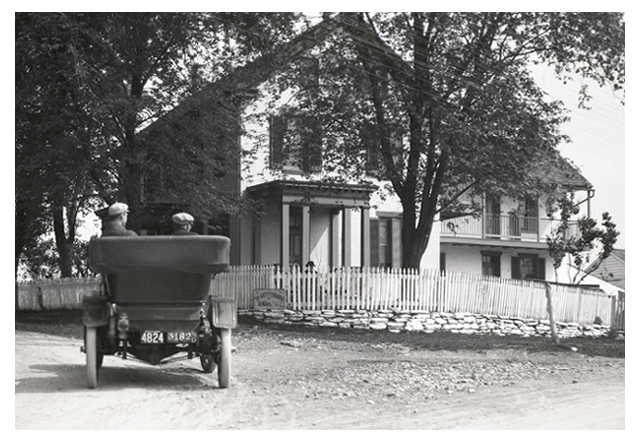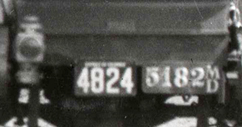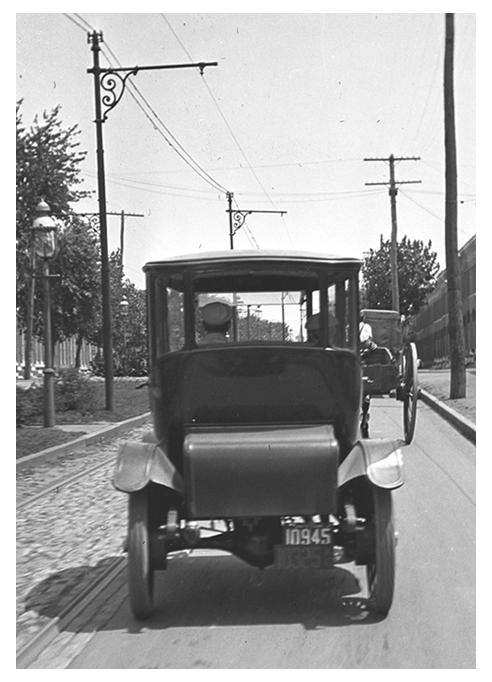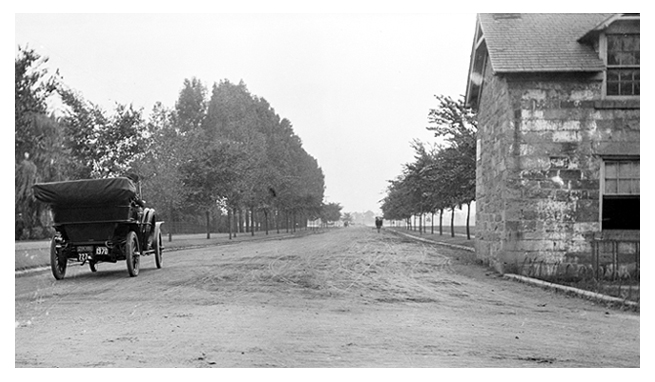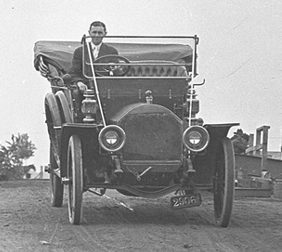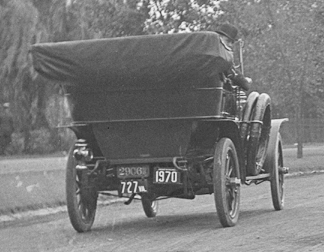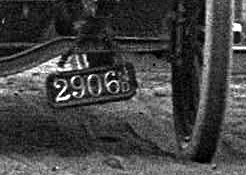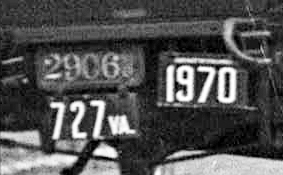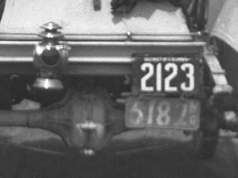Ahhh, the joys of motoring through the wide open spaces of... downtown Washington, D.C.! A century ago the view on 17th Street SW was far different than it is today, including that motorcars are operated on the left side of the road. The right side of this apparently one-way thoroughfare was reserved for horse-drawn carriages, one of which may be seen in the distance. The decayed building on the right, which has been restored, was the lock keeper's house during the nineteenth century when the Chesapeake and Ohio Canal terminated at this point.
This Sept. 9, 1909, view is looking southbound on 17th St. just south of Constitution Ave. We will assume that the driver, shown at right below peering over his shoulder at the photographer, is Mr. Abe Cohen, of Washington, to whom D.C. registration no. 1970 was assigned. Note that he is seated on the right side of his vehicle, not the left-hand position adopted by most auto manufacturers for 1910 models. The car is a Speedway, manufactured in Morris Heights, N.Y., only for the 1904 and 1905 model years.
Perhaps most interesting about this photograph, aside from the three license plates (required due to a lack of reciprocity between the three adjacent jurisdictions at the time), is the locale. Were we able to look beyond the image we would see the Washington Monument on our left. If Mr. Cohen turned to peer over his left shoulder he would have a fine view of the White House. A glance to the right, however, would not reveal the Lincoln Memorial, for its construction did not commence until 1914.


